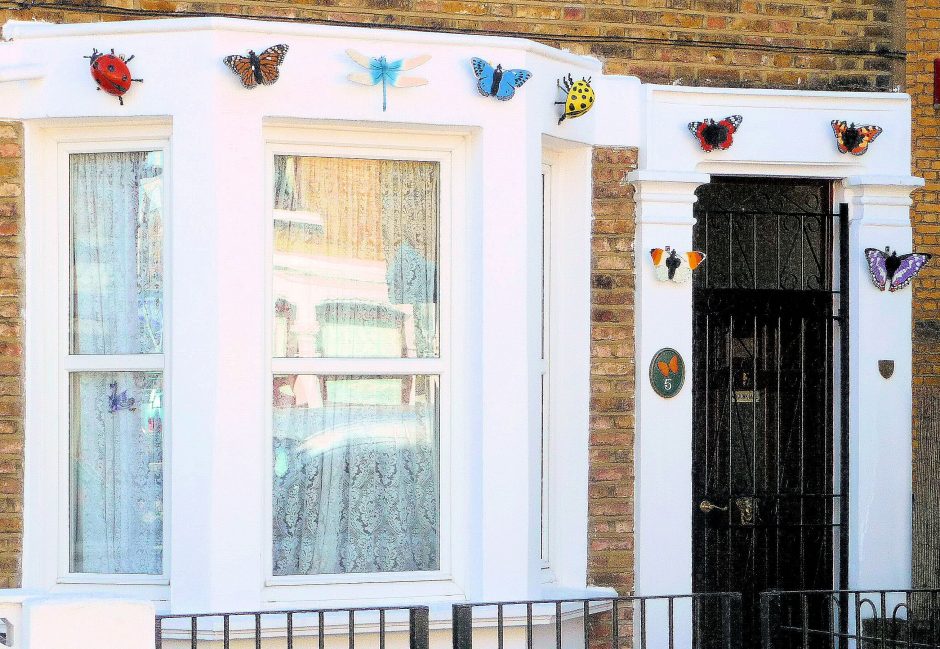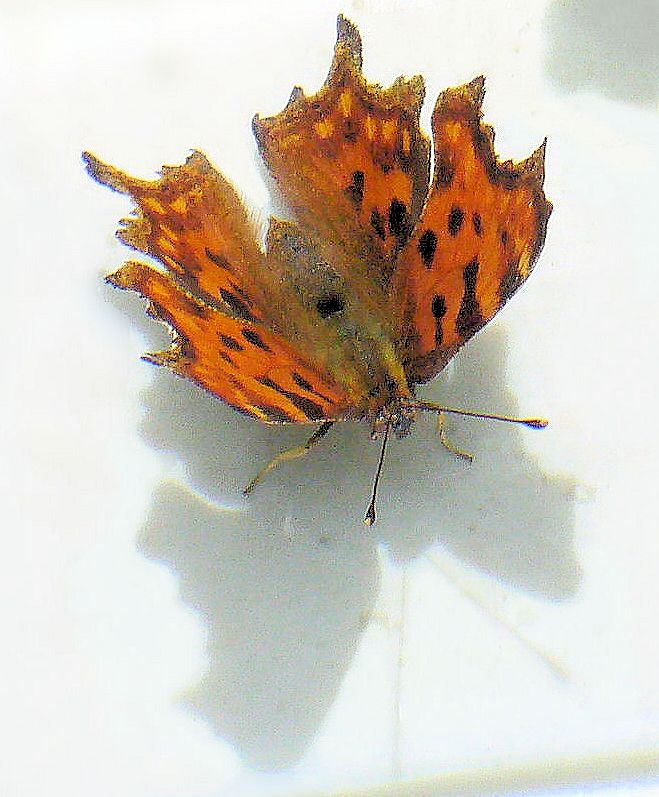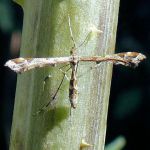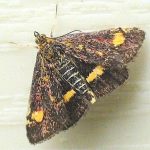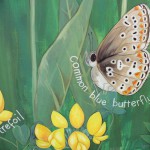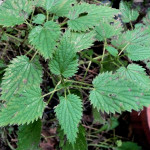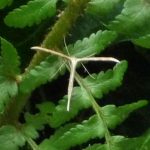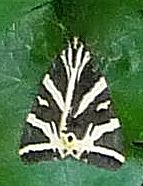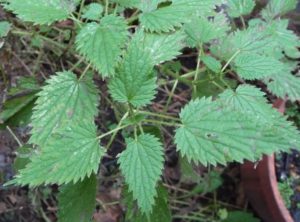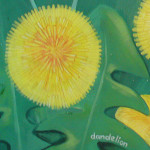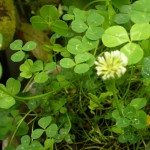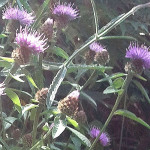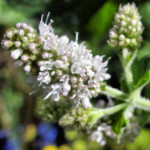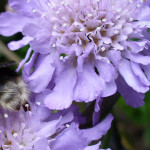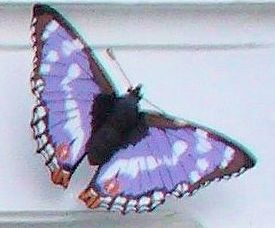FOR BUTTERFLIES & MOTHS
Butterflies and moths have lived on our planet for over 50 million years. But with climate change and human activity taking away their habitat, three quarters of British butterflies are in severe decline & many moths face an uncertain future.
The Very Hungry Caterpillar is often eaten by the very hungry baby Blue Tit & other members of the bird world. That is nature taking its course. But it isn’t the birds who have wiped out the butterflies.
The gardeners’ eye view of the caterpillar has been encouraged, in our time, to be one of fear and loathing and the use of pesticides. Perfect garden plants have been more highly valued than butterflies. Not helpful when so much of their habitat has been altered by other human activity.

Holly Blue Butterfly
More of us need to try and see the caterpillar as a possible future butterfly or moth, to be encouraged wherever possible. Whether we have a windowbox, a patio, a garden, or are in charge of a park or the grounds of a stately home, we can still make an effort to increase butterfly & moth numbers.
WE CAN PAY ATTENTION TO CHANGES AFFECTING WILDLIFE
* Garden makeover
* Mature trees and shrubbery are cut down
A garden makeover may mean that the resident spends more time in the garden. Garden makeover programmes encourage us to stamp our own personalities on the garden. This may involve ripping out vegetation ‘to let the light flood in’. Concrete, decking, glass blocks & lighting could be part of the new look.
Friends are invited round for barbecues, to sit out on the decking, eating & drinking. Heating a patio takes the chill off & allows more time to socialise later in the evening, when the weather cooperates. Now well-designed for the urban human, the garden may be less wildlife-friendly.
Has the resident any idea of wildlife nesting in that mature tree, living in that unfashionable evergreen? Stamping our own personalities on the garden’ may mean doing away with small ecosystems, with life forms so small we would not have noticed. Even if we had no intention of doing harm to local wildlife, changes from our garden makeover may amount to ‘collateral damage’.
-
* Property Developers
* Even an empty plot, overgrown with scrub & self-seeded trees & looking unkempt compared with what we see as acceptable – can be being used by wildlife. Insects can be living there. Food for birds, insects and their eggs and grubs. When a property developer flattens the area, a vast food harvest is taken away – like demolishing a high street, a supermarket for the birds.
WE CAN SUPPORT BUTTERFLY CONSERVATION, A GROUP WORKING TO SAVE NATIVE BUTTERFLIES AND MOTHS FROM EXTINCTION.
THIS UK-BASED CHARITY
* promotes butterfly-friendly, moth-friendly gardening
* carries out surveys, monitoring and research
* advises landowners, managers and organisations on how to conserve and restore natural habitats vital to the life-cycles, and the lives, of butterflies and moths.
You can sign up to Butterfly Conservation‘s free monthly newsletter, All-Aflutter. It provides the latest butterfly & moth news, tells you which species to look out for, & provides gardening tips & special offers.
Photo galleries and a-z listings on their website can help you to identify butterflies and moths :
http://butterfly-conservation.org/
If you can, join them. This charity relies on donations and membership subscriptions. Members receive their magazine, BUTTERFLY, three times a year.
BUTTERFLY CONSERVATION, Manor Yard, East Lulworth, Wareham, Dorset BH20 5QP
HOW TO CREATE A HAVEN FOR BUTTERFLIES AND MOTHS
Butterfly Conservation’s Tips
* Grow some native foodplants to feed caterpillars :
HOLLY and IVY to feed caterpillars of the Holly Blue Butterfly 
GARLIC MUSTARD and CUCKOOFLOWER: Orange Tip and Green-veined White 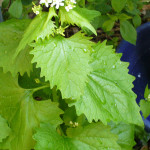
HOP: Comma and moths such as Buttoned Snout, Angle Shades and Dark Spectacle 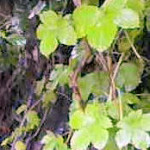
BUCKTHORN and ALDER BUCKTHORN: Brimstone
NETTLES: Comma, Red Admiral, Brimstone, Small Tortoiseshell and Peacock, and moths such as Plume Moth, Jersey Tiger, Scarlet Tiger, Spectacle, Small Magpie and Snout
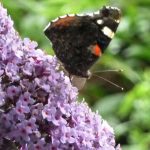
Red Admiral

Small Magpie Moth

Snout Moth
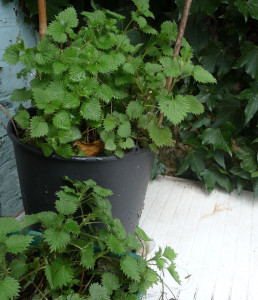
Nettle bucket, Spring Solstice 2015
Tip: Limit the spread of your nettles by growing them in a large container in a sunny corner.
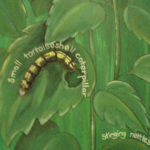
Small Tortoiseshell Caterpillar on Stinging Nettles, Wildflower Mural, Ecology Centre, Gillespie Park
* Provide nectar right through the Butterfly season – Choose sunny, sheltered positions in which to grow plants known to attract butterflies and moths :
Spring nectar : Aubretia, Bluebell, Clover, Cuckooflower, Daisy, Dandelion, Forget-me-not, Honesty, Pansy, Primrose, Sweet Rocket and Wallflower
Late summer / Autumn nectar : Buddleia, French Marigold, Ice Plant (Sedum Spectabile), 
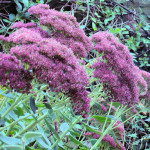 Ivy, Knapweed, Lavender, Marjoram (Oreganum), Michaelmas Daisy, Mint, Red Valerian, Scabious and Thyme
Ivy, Knapweed, Lavender, Marjoram (Oreganum), Michaelmas Daisy, Mint, Red Valerian, Scabious and Thyme
Tip: If you have Buddleia, prune some of it hard in March to ensure late flowering. Night-flying Moths visiting Buddleia include the Silver Y, Willow Beauty and Mother of Pearl
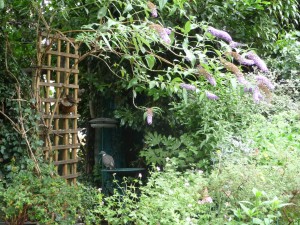
* Go wild. If you have a lawn, let part of it grow tall during the summer.
Butterfly caterpillars that prefer to eat tall grasses include Speckled Wood, Gatekeeper, Meadow Brown, Small Skipper, Wall, Marbled White and Ringlet
* Don’t buy peat-based compost, water-worn limestone or other materials taken from natural habitats vital to endangered butterflies and moths.
-
Consider giving a home to foodplants for moths or butterflies, even if they are considered common ‘weeds’. It could be a wild corner at the back of the garden that you can leave undisturbed… Or, in our case, a wall basket left to its own devices after nasturtiums finished & before spring bulbs appeared. The Dandelion is a food plant for the Yellow Shell Moth, one of which appeared on the nearby bay window.
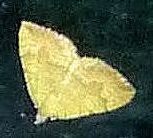
![Peacock with caterpillar [Inachis io] beta](http://highburywildlifegarden.org.uk/wp-content/uploads/2013/07/Peacock-with-caterpillar-Inachis-io-beta-453x600.jpg)
